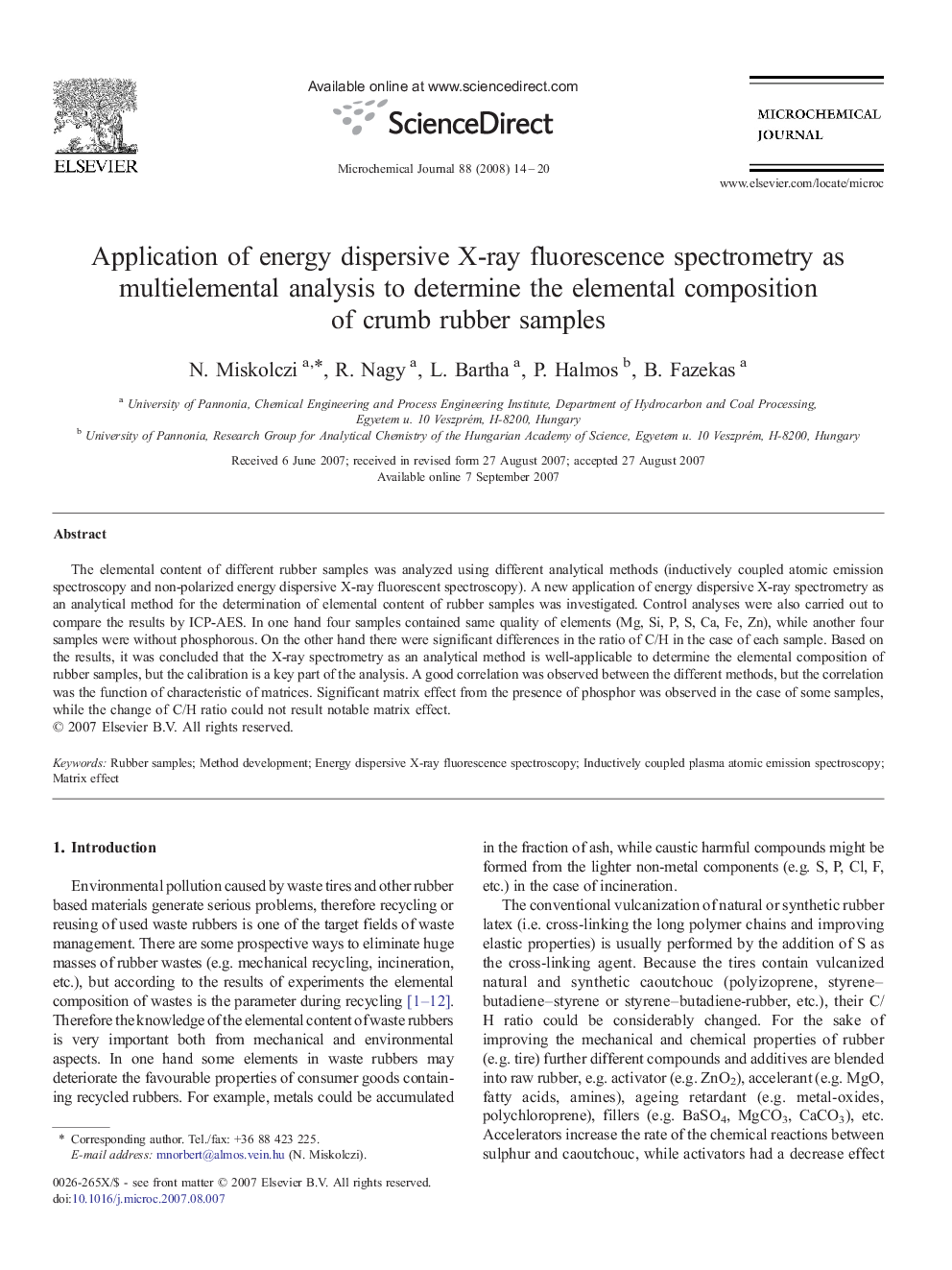| Article ID | Journal | Published Year | Pages | File Type |
|---|---|---|---|---|
| 1228296 | Microchemical Journal | 2008 | 7 Pages |
The elemental content of different rubber samples was analyzed using different analytical methods (inductively coupled atomic emission spectroscopy and non-polarized energy dispersive X-ray fluorescent spectroscopy). A new application of energy dispersive X-ray spectrometry as an analytical method for the determination of elemental content of rubber samples was investigated. Control analyses were also carried out to compare the results by ICP-AES. In one hand four samples contained same quality of elements (Mg, Si, P, S, Ca, Fe, Zn), while another four samples were without phosphorous. On the other hand there were significant differences in the ratio of C/H in the case of each sample. Based on the results, it was concluded that the X-ray spectrometry as an analytical method is well-applicable to determine the elemental composition of rubber samples, but the calibration is a key part of the analysis. A good correlation was observed between the different methods, but the correlation was the function of characteristic of matrices. Significant matrix effect from the presence of phosphor was observed in the case of some samples, while the change of C/H ratio could not result notable matrix effect.
